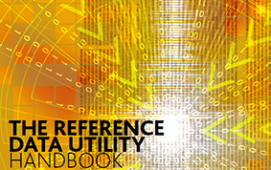
The notion that the natural world has a capital value beyond that provided by the economic activity it supports has gained ground among investors.
Consequently, a number of asset managers have emerged to service growing demand to support a natural capital and biodiversity market that’s estimated to grow 2,000 per cent in value to US$93 billion by the end of the decade, according to Bloomberg.
Among them is Climate Asset Management (CAM), a joint venture formed in 2020 by HSBC Asset Management and Pollination, a climate change investment and advisory firm. CAM aims to direct billions of dollars towards natural capital investments that will take the form of projects backing carbon sequestration and other offsetting services, all of which can generate revenue while at the same time helping to protect and broaden biodiversity.
With no equities or fixed income to invest in, the company’s data demands are different to most asset managers.
“Much of the ESG data we collect is via primary surveys where we work with in-country consultants,” Oliver Johnson, Head of ESG at Climate Asset Management, tells ESG Insight.
Instead, CAM buys analytics and risk analysis products from a variety of vendors.
Munich Re Risk Suite is one of them. It’s recently introduced a natural hazards edition to an established product that a wide range of asset managers use for climate change analysis. Another platform CAM uses is the World Resources Institute’s Aqueduct climate change risk analysis suite, which specialises in gauging water risks around the world.
The Food and Agriculture Organisation’s EX-Ante Carbon Balance tool is used for land-use, land-use change and forestry (LULUCF) carbon assessment at the screening stage. And the Integrated Biodiversity Assessment Tool (IBAT) is deployed for biodiversity and cultural heritage screening.
Additionally, CAM mines reports and studies provided by project developers and utilises Kroll for regular and enhanced know your customer screening.
“We selected these because they are market-leading and underpinned by the best global databases,” Johnson explains.
Monetising Nature
Natural capital markets seek to monetise fragile ecosystems and biodiversity without exploiting them. Forests, grasslands and reefs are able to absorb carbon dioxide from the atmosphere and help mitigate global warming. Capital raised by investing in projects that have a carbon sequestration or offset facility can be used to ensure those ecosystems are not developed and continue to support life and carbon capture.
This could prove crucial considering the World Economic Forum estimates that global gross domestic product valued at $44 trillion of economic value is dependent on the natural world and could be lost with the destruction of nature. Governments have got in the act too. The UK, for instance, plans to create a biodiversity offset credits market similar to carbon markets seen elsewhere in the world.
Biodiversity, however, is a tricky topic when it comes to data, as the recent A-Team ESG Data and Tech Summit London heard. While there is a relative abundance of data on water use and forest cover – much of it derived from study of satellite imagery – for other metrics, such as soil loss and erosion rates, there is a definite paucity of information.
Consequently, Johnson says CAM devotes a lot of resources to the data capture effort.
“Currently sourcing the quality of data we require to fulfil the metrics we want to capture and report cannot be fulfilled remotely,” he said. “As such the challenges are principally the time and cost associated with collecting them. However, we are seeing promising advancements, particularly on carbon and biodiversity, that will allow for a mixed-approach to data collection.”
As part of CAM’s efforts to bolster its visibility into the natural world, the company has created a dedicated in-house ESG Team, which is made up of two full time specialists, who work with specialist consultants to unearth the data and then apply that the analytical tools.
“We are also liaising with data and analytics providers as we grow to build out our monitoring, reporting and verification systems – in particular exploring remote sensing options for carbon, biodiversity and soil,” Johnson says. “Currently there is no single provider of these aspects that can meet the full requirements, which we hope might change in the future and we are watching developments keenly.”
Not for CAM the data shortages that bedevil other ESG focused asset managers. Because CAM own many of its asset outright, the data ingestion and management procession is relatively straightforward. That also goes for regulatory reporting. For them, the biggest hurdle is making sure that the data is actually gathered in the first place.
“The main challenge we have is ensuring that our in-country implementing partners have the right systems and resources in place to collect and report this data to us,” Johnson says.
Subscribe to our newsletter




